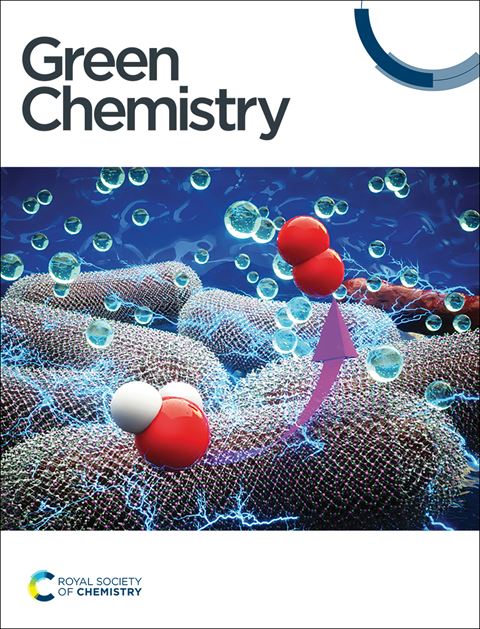有机氮平台化学品和药物前体:几丁质的可持续利用前景
IF 9.3
1区 化学
Q1 CHEMISTRY, MULTIDISCIPLINARY
引用次数: 0
摘要
几丁质是一种丰富的生物聚合物,来源于甲壳类动物的壳废物,含有生物固定的氮。将其转化为有价值的含氮有机化合物引起了人们越来越大的兴趣。这些化合物可以作为平台化学品,为化石化学品生产提供可持续的替代方案。在这篇综述中,我们讨论了几丁质增殖的一般途径,包括几丁质热解、去乙酰化成壳聚糖、解聚成n -乙酰几丁质低聚糖(COSs)和n -乙酰氨基葡萄糖(NAG)以及随后转化为呋喃、杂环化合物、多元醇、胺和氨基酸。特别强调最近在扩大几丁质衍生呋喃平台的化学空间方面取得的进展,特别是通过Diels-Alder反应和随后的脱水反应合成苯芳香族化合物。通过强调这些转化途径和由此产生的高价值产品,本文综述了几丁质可持续生产含氮化合物的最新进展和未来机遇。本文章由计算机程序翻译,如有差异,请以英文原文为准。

Organonitrogen platform chemicals and pharmaceutical precursors: a perspective on sustainable chitin utilization
Chitin is an abundant biopolymer sourced from, among others, crustacean shell waste and contains biologically-fixed nitrogen. Its conversion into valuable nitrogen-containing organic compounds has gained growing interest. These compounds can serve as platform chemicals and offer a sustainable alternative to fossil-based chemical production. In this review, we discuss the general pathways for chitin valorisation, including chitin pyrolysis, deacetylation to chitosan, depolymerisation into N-acetyl chitin oligosaccharides (COSs) and N-acetylglucosamine (NAG) and subsequent conversion to furans, heterocyclic compounds, polyols, amines and amino acids. Special emphasis is placed on the recent progress in expanding the chemical space attainable from chitin-derived furan platforms, particularly focusing on the synthesis of benzenoid aromatic compounds via Diels–Alder and subsequent dehydration reactions. By highlighting these transformation pathways and the resulting high-value products, this review provides a comprehensive overview of recent developments and future opportunities for the sustainable production of nitrogen-containing compounds from chitin.
求助全文
通过发布文献求助,成功后即可免费获取论文全文。
去求助
来源期刊

Green Chemistry
化学-化学综合
CiteScore
16.10
自引率
7.10%
发文量
677
审稿时长
1.4 months
期刊介绍:
Green Chemistry is a journal that provides a unique forum for the publication of innovative research on the development of alternative green and sustainable technologies. The scope of Green Chemistry is based on the definition proposed by Anastas and Warner (Green Chemistry: Theory and Practice, P T Anastas and J C Warner, Oxford University Press, Oxford, 1998), which defines green chemistry as the utilisation of a set of principles that reduces or eliminates the use or generation of hazardous substances in the design, manufacture and application of chemical products. Green Chemistry aims to reduce the environmental impact of the chemical enterprise by developing a technology base that is inherently non-toxic to living things and the environment. The journal welcomes submissions on all aspects of research relating to this endeavor and publishes original and significant cutting-edge research that is likely to be of wide general appeal. For a work to be published, it must present a significant advance in green chemistry, including a comparison with existing methods and a demonstration of advantages over those methods.
 求助内容:
求助内容: 应助结果提醒方式:
应助结果提醒方式:


